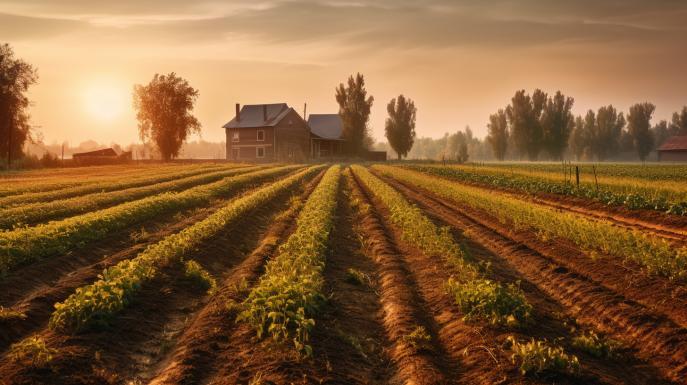On the cusp of a future that demands innovative and environmentally friendly solutions, sustainable agriculture emerges as the beacon that guides our efforts to nourish humanity and protect our planet. Learn in this essential guide how practices such as sustainable land management, soil conservation techniques and crop rotation not only preserve vital resources, but increase fertility and combat erosion, bringing us one step closer to a flourishing tomorrow . Join us on this verdant journey and discover how your choices can sow transformation for a better future.
What are the essential sustainable practices in agriculture for a better future?
Sustainable land management is essential to preserve resources. It involves practices that prevent soil degradation and promote biodiversity. For example, soil conservation techniques like mulching and no-till maintain soil health by reducing erosion. Crop rotation is another fundamental practice; by alternating different types of crops, the depletion of soil nutrients is prevented, reducing the need for chemical additives. These practices help increase soil fertility and maintain sustainable agricultural production for future generations.
How does sustainable agriculture benefit environmental health and society?
The integration of agroforestry systems and its importance for biodiversity
Agroforestry systems are beneficial for biodiversity as they integrate trees, crops and animals in the same area, creating a productive and diverse ecosystem. This integration supports wildlife, provides habitats for native species, and improves soil structure and health by increasing organic matter and reducing erosion.
Natural pollination and biodiversity: The critical role in sustainable agriculture
Natural pollination is critical for sustainable agriculture as it contributes to crop biodiversity. The presence of pollinators, such as bees and butterflies, favors plant reproduction and increases the resistance of crops to diseases and climate variations, strengthening the agricultural production system.
Strategies for efficient use of water resources in agriculture
Efficient use of water resources is achieved through techniques such as drip irrigation and rainwater harvesting. These strategies minimize water waste, improve crop resilience during periods of drought and reduce the need for water from external sources, aligning agricultural practice with sustainability principles.
What are the barriers and challenges faced in implementing sustainable agriculture?
The main economic challenges for sustainable farmers include higher initial costs and difficulties in accessing markets. Effectively reducing the use of pesticides requires appropriate education and the dissemination of techniques for cultivating resistant plants. Green manure, in turn, promotes soil health without harmful chemicals.
For significant progress, these barriers require coordinated efforts and investments in specialized knowledge, in addition to developing market systems that value sustainable practices.
What are the long-term impacts of sustainable agriculture on sustainable development?
Agricultural product certifications promote sustainable practices by establishing standards that farmers must follow to minimize damage to the environment and ensure food quality. This ensures the appropriate management of natural resources and encourages methods that preserve biodiversity. To the clean technologies in agriculture play a critical role in reducing agriculture's impact on global warming by introducing tools and processes that aim to achieve energy efficiency and reduce greenhouse gas emissions. The positive impacts of sustainable agriculture are multifaceted: in addition to environmental benefits, such as improved soil health and preservation of ecosystems, there are economic gains, such as greater productivity and profitability, and social advances, which include stronger rural communities and equity in the supply chain. .
In this article, we explore essential practices for sustainable agriculture that result in a brighter future, including sustainable land management and soil conservation techniques. We discuss how such practices not only improve environmental health and society, but also how they overcome the challenges and barriers to adopting them effectively. In the long term, sustainable agriculture has the undeniable potential to positively impact sustainable development, slow climate change and sustain local economies. Implementing these strategies requires commitment and collaboration, but is crucial to ensuring a healthy environment and a resilient future for all.
FAQ for the Blog Post on Sustainable Agriculture Practices for a Better Future
Q: What soil conservation techniques are essential for soil health?
A: The most essential soil conservation techniques for maintaining soil health include mulching and no-till. These practices help reduce erosion and maintain soil fertility.
Q: How do agroforestry systems benefit biodiversity?
A: Agroforestry systems are beneficial to biodiversity because they integrate trees, crops and animals, creating a diverse ecosystem that supports wildlife and provides habitats for native species, while improving soil structure and health.
Q: What economic challenges do sustainable farmers face?
A: Economic challenges for sustainable farmers include higher start-up costs and difficulty accessing markets. There are also challenges related to education and the dissemination of sustainable farming techniques.
Q: What is the role of agricultural product certifications in sustainable development?
A: Agricultural product certifications are important for sustainable development because they establish standards that promote practices that minimize damage to the environment, guarantee food quality and encourage methods that preserve biodiversity.
Q: How do drip irrigation and rainwater harvesting contribute to sustainable agriculture?
A: Drip irrigation and rainwater harvesting are strategies that contribute to sustainable agriculture by minimizing water waste, improving crop resilience in periods of drought, and reducing the need for water from external sources.



